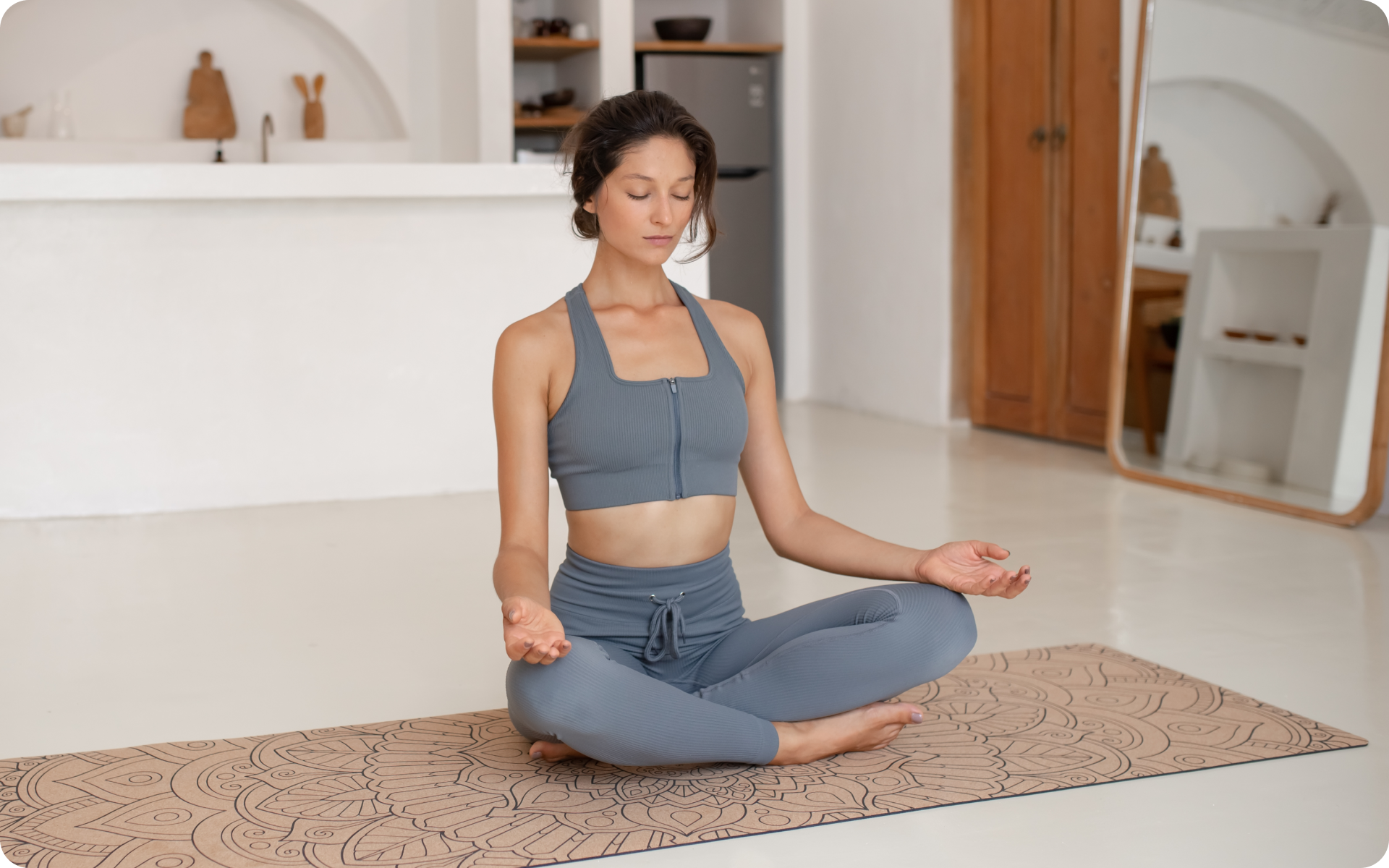In today’s world, the chaos of daily life and work pressure can overwhelm us and make us feel stressed and disconnected from our bodies. Yet, a path to personal healing exists where we feel most connected to ourselves. Believe it or not, our bodies have an incredible innate intelligence. This is wisdom that can help us recover from previous experiences.
Allow us to introduce somatic bodywork. Think of it as a reset button. This holistic journey to self-discovery and self-recovery can help you nurture a profound mind-body connection and feel utterly relaxed and stress-free. Are you willing to give it a shot?
Join us as we dive into this journey of somatic bodywork therapy and see how it can benefit us mentally and emotionally.
What is Bodywork for Trauma Release?
It is essential to understand what somatic bodywork is. In simple terms, somatic bodywork is a body-centric approach that may combine other forms of mind-body techniques such as somatic exercises, somatic therapy, and massages to breathe. This is aimed at reducing muscle tension, helps us reconnect with ourselves, and helps our bodies release years of stored unresolved emotions that could be linked to experiencing a traumatic event.
In essence, somatic bodywork can be beneficial for individuals who have experienced a traumatic event or are experiencing other trauma/stress-related disorders and cannot feel relaxed despite different techniques (15). They may sometimes feel calm, but their bodies aren’t, as the unresolved emotions linked to experiencing a traumatic event can manifest in the body as tension.
Somatic bodywork can help individuals become more aware of their bodily sensations and address their tension points to mitigate and relieve stress.
If you wish to reach into the deep crevices of your mind, take yourself out of the mental loop, regain balance, infuse yourself with optimism, and cultivate compassion – BetterMe: Meditation & Sleep app is exactly what you need!
Is Somatic Bodywork the Same as Massage?
While somatic bodywork incorporates massage techniques, it cannot be categorized as regular. It is a lot more than simply massaging your stiff muscles.
In traditional massage, your practitioner finds points of tension, knots, and painful areas to massage and relieve physical pain. The focus is mostly external so that your body is rid of pain. You don’t tap into your inner state. In the case of somatic bodywork, the focus is both external and internal. You undergo different experiences, emotions, and feelings during somatic bodywork training.
Your practitioner massages your body, uses verbal skills, and connects you with your inner state. During the session, the practitioner may notice certain areas of your body being tight or tense and will guide you to tap into your inner experiences through this practice. The unresolved emotions stored as tension will be released as you feel lighter and relaxed (13).
A regular massage usually relieves physical pain, whereas a somatic bodywork massage relieves physical and emotional pain.
What Are the Four Somatic Practices?
Somatic practices are performed to heal our bodies and release unresolved emotions. These are a group of body-centered activities that help us reconnect with our inner selves (10).
The four common somatic practices are:
Somatic Therapy
Somatic-based therapy is about fostering a stable mind-body connection. It is about connecting with our inner selves and feeling ourselves again. According to this therapy, our minds and bodies are connected, By tapping into our inner selves, we can let go of stored unresolved or negative emotions and unpleasant experiences. Some examples of somatic-based therapy include Hakomi and Bioenergetics.
Bioenergetics
Bioenergetics tells us that our bodies have the innate capabilities to heal ourselves and that we can let go of painful memories and emotions by finding the root causes (3). If we go through a rough time, this can manifest in our bodies as muscle stiffness or aches. The somatic practitioner helps us find the painful spot and guides us to discover what is hurting on a deeper level.
Hakomi
Hakomi therapy is a type of experiential psychotherapy integrating the principles of Buddhism and Taoism. In this therapy, the practitioners tell positive affirmations and undertake consensual touch to help us with our unpleasant experiences as we go through them (12).
Somatic Movement
Somatic movement constitutes somatic exercises that can help us improve our activities, flexibility, and coordination. Dancers, singers, and stage performers practice it. It involves us feeling our movements and slowing down to be present in the moment.
Below are two examples of somatic movements:
Feldenkrais Method
The Feldenkrais Method is about restoring our brain’s neuroplasticity and improving physical movements (16). Sometimes, we are limited in our movements and cannot move freely. The Feldenkrais Method teaches us to move gracefully and utilize the full range of motion. It is practiced in groups and one-to-one lessons (4).
Alexander Technique
Alexander Technique is another example of somatic movement where the instructor teaches to move with poise and grace to improve posture and movement. It is mostly given as a private lesson where the teacher guides the student to sit, move and stand and restore balance and stability.
Read more: Somatic Healing Techniques: A Holistic Approach to Physical and Emotional Recovery
Somatic Bodywork
Somatic bodywork is using verbal and non-verbal techniques to release stored trauma and tension in the body. The practitioner massages, talks, and guides the clients through their journey of self-recovery. Somatic bodywork exercises include:
Rolfing
Rolfing, also known as Structural Integration, is a type of massage where the focus is fascia, deep connective tissue surrounding our bones, nerves, tissues, and organs. The proponents of rolfing believe that by massaging the fascia, our muscles get relieved of tension and stiffness. By massaging fascia, our body is brought into alignment. The majority of our physical issues arise due to misalignment (11).
Somatic Breathwork
Somatic breathwork is about consciously managing our breath to feel connected with our inner selves and relax our minds. When stressed or anxious, we are often told to calm down by focusing on our breath. That’s the essence of somatic breathwork.
Considering somatic breathwork, here are the three types of somatic therapies:
Conscious Connected Breathing
It is about relaxing our minds and establishing a stable mind-body connection. During this exercise, you are supposed to take slow, deliberate, controlled breaths, including practices like diaphragmatic, paced, and deep breathing. This helps us get into our senses and improves our mind-body connection (6).
Biodynamic Breathwork
Breathwork is a term used to describe therapy through breathing exercises. Biodynamic breathwork helps to release trapped unresolved emotions and restore balance. This technique uses controlled breathing, movements, touch, emotions, sounds, and meditation to release tension and restructure our internal systems (6).
During treatment, you might take deep breaths, think about old memories and feelings, and/or listen to music or sounds. This practice can also involve making sounds with your voice, shaking your whole body, or dancing in therapeutic forms, which a trained therapist guides.
What is a Somatic Technique?
The somatic technique can heal the stored unresolved emotions linked to experiencing a traumatic event and is used with individuals who are diagnosed with Stress, Anxiety, PTSD, etc. It focuses on establishing a significant mind-body connection and using the body as an entry point to the mind to relax the body once and for all. Somatic techniques incorporate many bodily exercises, such as the Feldenkrais Method, Rolfing, or Alexander Technique.
If you are a newbie and feeling stressed or anxious, you should try out somatic exercises for anxiety, specially curated for beginners. The somatic therapy exercises for beginners include dancing, walking, and moving. With slight differences, the major aim of these exercises is to do a somatic release of unresolved emotions.
What Are the Benefits of Somatic Therapy?
Emotions play a huge role in self-perception and happiness. Achieving your milestones and staying positive may become difficult if the past haunts you. Somatic bodywork can help you to be conscious of the present.
Join us as we explore some of the best benefits of somatic bodywork to see how it works wonders for our well-being.
Enhances Emotional Awareness
Somatic exercises can enhance our emotional awareness and connect us to our inner selves. According to a study, practicing Laban Movement Analysis (LMA), a type of somatic exercise that improves our posture and body movements, showed increased emotional awareness (12).
Relieves Pain
Since the focus is on our areas of tension during somatic exercises, it helps us relieve physical and emotional pain. A 2013 study proved that the Rosen Method Bodywork (RMB)reduces fatigue and pain in people with chronic back pain (1).
Improves Gait
Somatic exercises also benefit older adults or dancers, singers, and musicians. By paying attention to your body’s sensations and movements, you become more conscious of any habits or restrictions in your gait.
Treats Post-traumatic Stress Disorder (PTSD)
Somatic therapy is known to help individuals manage symptoms of PTSD. Many studies suggest that Somatic Experiencing (SE) therapy, a body‐focused therapy that integrates body awareness into the psychotherapeutic processes, treats symptoms of PTSD in adults (9).
Breaks Addiction Patterns
Finally, somatic therapy can be incorporated into treatment plans of individuals suffering from addictions like substance use. Mind-body techniques and Somatic Experiencing (SE) therapies have been known to be helpful in substance use treatment plans.
If you’ve dipped your toes in meditation before but couldn’t sit through a session because of all the thoughts buzzing in your head, impulses snatching away control or all the overwhelming feelings that start bubbling up the minute you sink into the silence, it’s only because you didn’t have the right guidance. Start using BetterMe: Meditation & Sleep app and watch your life transform!
What Are Some Somatic Exercises for Beginners?
If you want to do somatic exercises at home, you can opt for the following:
Body Scan Exercise
Paying attention to these feelings and breathing can make our minds and bodies feel better. It changes how we think about pain, aches, and discomfort. Being in the moment helps us find relief. To perform a body scan exercise:
- Sit comfortably and breathe through your nose, then through your mouth.
- Close your eyes when you breathe out.
- Pay attention to how your body feels.
- Start from the tip of your head and slowly check how each part feels.
- There is no need to change anything; just notice if it feels comfy.
- Go all the way down to your toes, evenly checking every part.
Somatic Breathing
You can also get rid of pent-up emotions by performing somatic breathing. Inhale and exhale slowly, and do controlled breathing to feel your body and see where your points of tension are. Just like you do meditation, practice diaphragmatic breathing in the following way:
- Choose a quiet and safe place to walk, indoors or outdoors, wearing comfy clothes.
- Stand still to ground yourself; feel the connection between your feet and the ground.
- Relax your body, letting your weight settle evenly on both feet.
- Walk very slowly, taking small steps, paying close attention to the sensations.
- Focus on the physical feelings as you lift, move, and place your feet.
- Be aware of weight shifting, leg movement, breath rhythm, and foot contact with the ground.
- Pay attention to your breath; try to sync it with your steps.
- Eventually, stop and stand still.
- Reflect on your somatic walking experience, noting any changes in sensations, thoughts, or emotions.
Somatic Walking
Lastly, you can also do somatic walking by walking with controlled steps.
- Choose a quiet and safe place to walk, indoors or outdoors, wearing comfy clothes.
- Stand still to ground yourself; feel the connection between your feet and the ground.
- Relax your body, letting your weight settle evenly on both feet.
- Walk very slowly, taking small steps, paying close attention to the sensations.
- Focus on the physical feelings as you lift, move, and place your feet.
- Be aware of weight shifting, leg movement, breath rhythm, and foot contact with the ground.
- Pay attention to your breath; try to sync it with your steps.
- Eventually, stop and stand still.
- Reflect on your somatic walking experience, noting any sensations, thoughts, or emotional changes.
How Do You Prepare for Somatic Bodywork Therapy?
If you want to pursue somatic bodywork, here’s what you need to know:
First of all, you should find a trained somatic therapy practitioner. You can look for a practitioner online in a major city. It’s up to you if you want to take online classes or on-site group classes. After researching a practitioner, it is time to consider what you need help with. You must know that you need to share your experiences with the practitioner and that you may have to deal with painful memories of the past.
If you meet your practitioner on-site, you should know that the session may include touch, talk, or movement. Before reaching the venue, take some time to relax your mind and focus on the purpose of your session. During the session, your practitioner will discuss with you, decide on the best therapeutic approach, and guide you through the sessions. Be confident and be as expressive as you can. This will help your practitioner understand you more deeply and give you the support you need. If you feel like crying, do not hesitate. If you feel pain or uncomfortable, let your practitioner know.
After the session, take a few minutes to recall what you went through during the session. Somatic therapy is about releasing tension and gaining deeper insights into your mind and body. Also, record changes in your mind and body before and after the session.
It is vital to know that somatic therapy may be a bit uncomfortable at first, and the recovery process may take time.
What is Somatic Bodywork For and Not?
Although somatic bodywork has no apparent risks, pregnant women should seek professional advise before attempting somatic therapy.
Also, note that somatic bodywork isn’t a one-size-fits-all approach. What works for you may not work for your friend or your spouse. You should seek help from a certified somatic trainer to learn the right movements.
This therapy may be uncomfortable for some individuals, so it is important to inform your practitioner beforehand. If you have a severe health crisis or an injury, seek medical attention immediately. It is safe to state that somatic bodywork is a complementary approach to traditional medicine, not a replacement for it.
Read more: Somatic Dance: Liberation through Expression and Movement
FAQs
What are the benefits of somatic massage?
Somatic massage is beneficial as it relieves muscle pain and stiffness and improves our posture and gait (17). It can also relax our minds and make us feel light and free.
Where is trauma stored in the body?
Once we experience a traumatic event and do not recover from it, it can be stored in fragments in our memory and emotional centers in the brain, the amygdala, and the hippocampus. These unprocessed memories/emotions may show up in our bodies, such as muscle tension, headaches, tightness in our chest, etc.
How do you release trapped trauma?
You can release these trapped, unresolved emotions by undergoing somatic therapy. The basic purpose of somatic therapy is to establish a mind-body connection and release these emotions.
What does a trauma release look like?
During a somatic release, you may notice physical sensations, movements, or changes in your body, such as muscles tightening, contracting, and relaxing. You may also express emotions such as crying, anger, fear, etc. You may experience changes in breathing patterns, such as deep sighing or deep exhales. You may also experience catharsis, a sense of relief.
The Bottom Line
Somatic bodywork is pretty beneficial for releasing negative emotions and restoring balance. Getting the support we need to release our stored tension and feel free is vital to living a contented life. These practices can help us relax and understand our bodies more.
This therapy works like a bridge that connects our minds and bodies. It enables us to explore the pain areas and re-discover the path to recovery. If you are new to this practice, consult a certified somatic therapist to ensure you don’t make any mistakes.
DISCLAIMER:
This article is intended for general informational purposes only and does not serve to address individual circumstances. It is not a substitute for professional advice or help and should not be relied on for making any kind of decision-making. Any action taken as a direct or indirect result of the information in this article is entirely at your own risk and is your sole responsibility.
BetterMe, its content staff, and its medical advisors accept no responsibility for inaccuracies, errors, misstatements, inconsistencies, or omissions and specifically disclaim any liability, loss or risk, personal, professional or otherwise, which may be incurred as a consequence, directly or indirectly, of the use and/or application of any content.
You should always seek the advice of your physician or other qualified health provider with any questions you may have regarding a medical condition or your specific situation. Never disregard professional medical advice or delay seeking it because of BetterMe content. If you suspect or think you may have a medical emergency, call your doctor.
SOURCES:
- A Somatic Movement Approach to Fostering Emotional Resiliency through Laban Movement Analysis (2017, ncbi.nlm.nih.gov)
- Alexander technique and Feldenkrais method: A critical overview (2004, researchgate.net)
- Bioenergetic Therapy – What It Is All About? (2023, psychcrumbs.com)
- Breathwork (n.d., goodtherapy.org)
- Better or Worse: a Study of Day-to-Day Changes over Five Months of Rosen Method Bodywork Treatment for Chronic Low Back Pain (2013, pubmed.ncbi.nlm.nih.gov)
- Feldenkrais Method (n.d., goodtherapy.org)
- Feldenkrais Movement Lessons Improve Older Adults’ Awareness, Comfort, and Function (2017, pubmed.ncbi.nlm.nih.gov)
- Rebirthing-Breathwork, activation of the autonomic nervous system, and psychophysiological defenses (2018, researchgate.net)
- Somatic Experiencing for Posttraumatic Stress Disorder: A Randomized Controlled Outcome Study (2017, ncbi.nlm.nih.gov)
- Somatic Practices: What They Are and How They Work (2023, betterme.world)
- Rolfing therapy: Technique, benefits, and more (2022, medicalnewstoday.com)
- What Is Hakomi Therapy? (2022, verywellmind.com)
- What Is Somatic Bodywork? (2021, conscioussoma.com)
- What Is Somatic Massage Therapy? What Are Its Benefits? (2022, bestdayfitness.com)
- What Is Somatic Therapy? (2023, health.com)
- Your Brain, Neuroplasticity, & the Feldenkrais Method (2018, feldenkrais.com)










